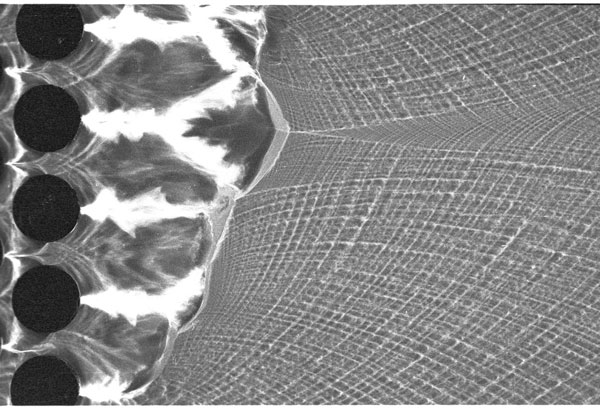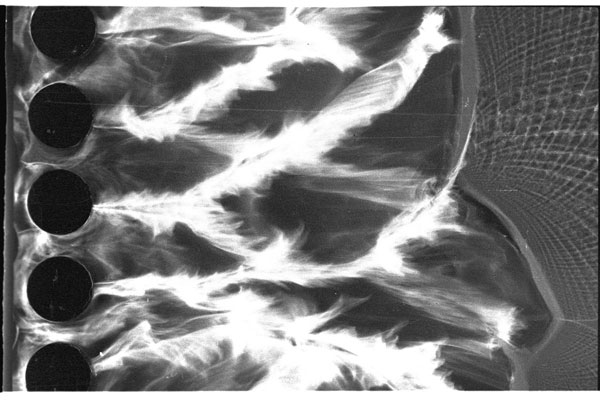Detonation Waves
Matei I. Radulescu, (matei@uottawa.ca)
University of Ottawa
Brian Maxwell,
University of Ottawa
John H. S. Lee,
McGill University
Self-luminous, open-shutter photographs of the re-establishment of detonation waves in a thin channel downstream of cylinder rows. The onset of detonation is marked by the appearance of a fish scale cellular pattern.


The images are self-luminous open-shutter photographs illustrating the re-establishment of acetylene-oxygen detonation waves in a thin channel downstream of several columns of cylinders. These records illustrate the integrated time-history of all the wave reflections as a detonation wave propagates from left to right. The luminous paths represent the path of regions of intense combustion at the front the wave. The fine fish-scale-like structure that can be seen within the cylinder pores and at the far right corresponds to the cellular structure of self-supported detonations. This permits to identify the location where the gas sustained detonative combustion. Regions where these patterns are absent correspond to locations where the wave was partially quenched. These occur at the exit of the cylindrical section, where the detonation wave diffracts around the cylinders and is quenched via the sudden area expansions. The punctuated re-establishment of the detonation wave, also known as a deflagration-to-detonation transition, results from the wave reflections following the attenuation process.
This work was supported by NSERC.
The images have not been published anywhere.
Copyright © M. I. Radulescu, 2008.
